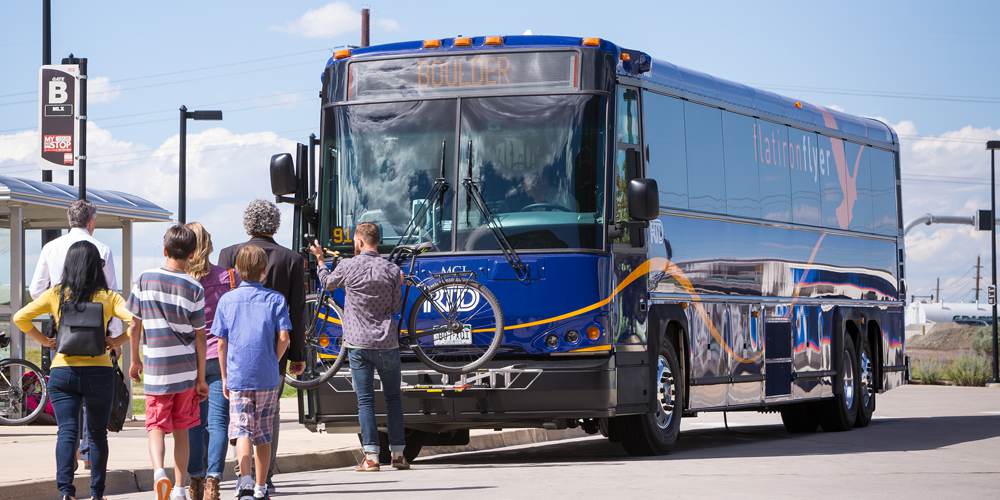
Flatiron Flyer Facts

Facts
- Length: 18 miles
- Vehicle: Bus Rapid Transit
- Stations: 6
- Parking: 4,200 spaces
- Service Frequency: FF1 - 15 min (5 a.m.-6 p.m.); check schedule for other FF routes
At a Glance
- The Flatiron Flyer, or U.S. 36 bus rapid transit (BRT), is part of RTD’s 2004 voter-approved FasTracks plan to expand transit across the Denver metro region.
- The line encompasses 18 miles of express and high-frequency bus service between downtown Denver and Boulder, passing through Westminster, Broomfield, Superior and Louisville.
- The line's six stations include U.S. 36•Sheridan (formerly U.S. 36•Westminster Center); U.S. 36•Church Ranch; U.S. 36•Broomfield; U.S. 36•Flatiron; U.S. 36•McCaslin; and U.S. 36•Table Mesa.
- BRT elements improve travel time, reliability, and customer experience. These elements include express lane extensions, queue jumps at highway ramps, enhanced shelters with canopies, ticket vending machines, and programmable information displays with real-time bus information.
- The Flatiron Flyer offers customers their choice of limited-stop and all-station service.
Project Overview
- 2001: BRT project began as part of the U.S. 36 Major Investment Study on BRT and commuter rail technologies.
- 2006-2010: The project's first phase was the first element of the FasTracks program to be completed and included new bus pullouts and a pedestrian bridge at U.S. 36•McCaslin; a new Park-n-Ride and bus pullouts at U.S. 36•Church Ranch; and a new Park-n-Ride, bus pullouts, and pedestrian bridge at U.S. 36•Broomfield.
- 2013-2015: The Colorado Department of Transportation, in partnership with RTD, completed the express lanes project between Federal Boulevard and Table Mesa Drive. The project also included bus bypass lanes at the Sheridan, Church Ranch, McCaslin and Flatiron stations; transit signal priority at intersections; and BRT vehicles. The first milestone for this phase of the project was the opening of the pedestrian bridge and bus pullouts at Table Mesa in 2013.
- 2016: RTD’s BRT service opened to the public on January 3.
Ridership
Boardings regularly fluctuate due to many factors, including economic conditions, seasonal demands, remote work trends, service disruptions, large events, and activities. A regularly updated overview of RTD's ridership is available online in the Board Briefing Documents.
- 2024 Total Ridership: 1,336,000
- 2023 Total Ridership: 1,219,000
- 2022 Total Ridership: 1,070,000